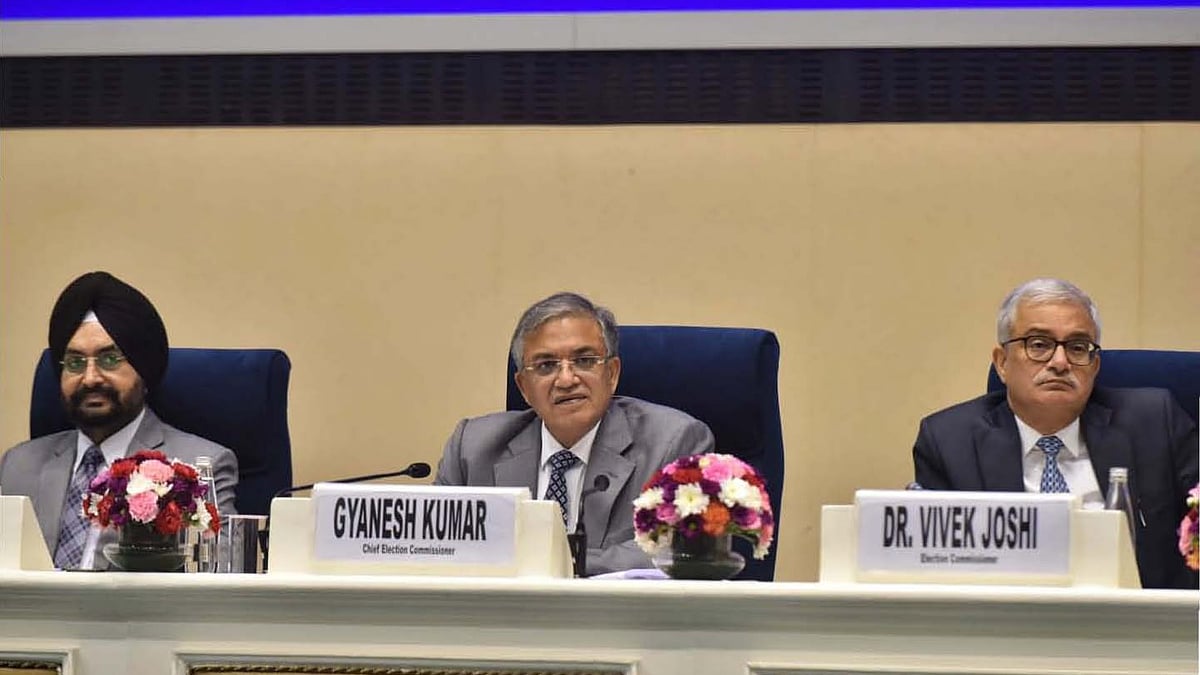POLITICS
Amid 'vote chori' jibes, Bihar polls in just two phases for first time in 20 years
ECI shortens Bihar polls while citing streamlined elections, addressing past criticism on voting in harsh weather

For the first time in two decades, Bihar will go to the polls in just two phases — on 6 and 11 November — the Election Commission of India (ECI) announced on Monday, 6 October. The votes will be counted and results declared on 14 November, Chief Election Commissioner Gyanesh Kumar announced at a press conference in New Delhi.
The decision marks a significant shift from Bihar’s past electoral timelines. In the 2010 Assembly elections, polling was held in six phases. This was reduced to five phases in 2015, then three in 2020.
Back in 2005, Bihar polls had four phases. The new schedule is touted as further streamlining, as the ECI pushes for more compact elections, in part responding to recent criticism over prolonged polling during adverse weather conditions. However, it is important to note that the weather conditions in the stipulated schedule are far from adverse.
Anyway, the Commission had faced flak after the 2024 Lok Sabha elections, which were spread across seven phases, making them the second-longest general elections in India's history after 1951–52.
That election was conducted amid a severe heatwave, with temperatures in several parts of the country soaring close to 50ºC, especially in May.
Voter turnout took a noticeable hit as a result. Acknowledging the miscalculation, then chief election commissioner Rajiv Kumar had admitted, “Elections should have been completed a month earlier… They shouldn’t have been held in such hot weather… It is a big election that involves a lot of forces. There is a lot of movement. We cannot reduce the time taken for the process, but it could have been done earlier instead of in such heat.”
Published: undefined
What's at stake?
The upcoming Bihar elections will see the ruling National Democratic Alliance (NDA) coalition, led by chief minister Nitish Kumar, face off against the Opposition Rashtriya Janata Dal (RJD)-Congress Mahagathbandhan alliance.
In the 2020 Assembly elections, the RJD emerged as the single largest party with 75 seats and came to power in coalition with Nitish Kumar's JD(U), though Kumar switched to the BJP in 2024, bringing the NDA to power with 117 seats.
This election is also set to feature a new political player: poll strategist Prashant Kishor, who is expected to contest under the banner of Jan Suraaj, the political movement he launched in Bihar.
The term of the current 243-seat Bihar Assembly ends on 22 November, necessitating the polls. The announcement of election dates came just a day after the ECI wrapped up a two-day visit to Bihar (4–5 October) to assess preparedness. During consultations, political parties urged the ECI to hold elections after Chhath, a major festival in Bihar falling between 25 and 28 October, and to reduce the number of polling phases — both of which were reflected in the final schedule.
Published: undefined
Quick polls, yes SIR
These will be the first Assembly elections to be conducted following the ECI’s decision on 24 June to initiate a Special Intensive Revision (SIR) of electoral rolls. Bihar was chosen as the first state to undergo this revision. Breaking from the standard practice of annual and pre-election updates, the Commission opted for a complete re-verification of the rolls.
As a result of the SIR, Bihar’s electoral roll saw a net reduction of 68.5 lakh voters. While 21.53 lakh new electors were added, the total number of registered voters now stands at approximately 7.42 crore. The decision to carry out the SIR has, however, come under legal scrutiny and is currently being challenged in the Supreme Court, which is scheduled to hear the matter on Tuesday.
The Bihar polls will also be the first Assembly elections to be conducted under the leadership of chief election commissioner Gyanesh Kumar, who assumed office in February. His predecessor Rajiv Kumar had overseen the 2024 Lok Sabha polls.
The last Bihar Assembly election in 2020 was notable as it was the first state election held during the Covid-19 pandemic.
It was conducted in three phases from 28 October to 7 November, with counting on 10 November. Despite the pandemic, the overall voter turnout was 56.93 per cent, with women outvoting men — 59.69 per cent compared to 54.45 per cent.
Published: undefined
Follow us on: Facebook, Twitter, Google News, Instagram
Join our official telegram channel (@nationalherald) and stay updated with the latest headlines
Published: undefined